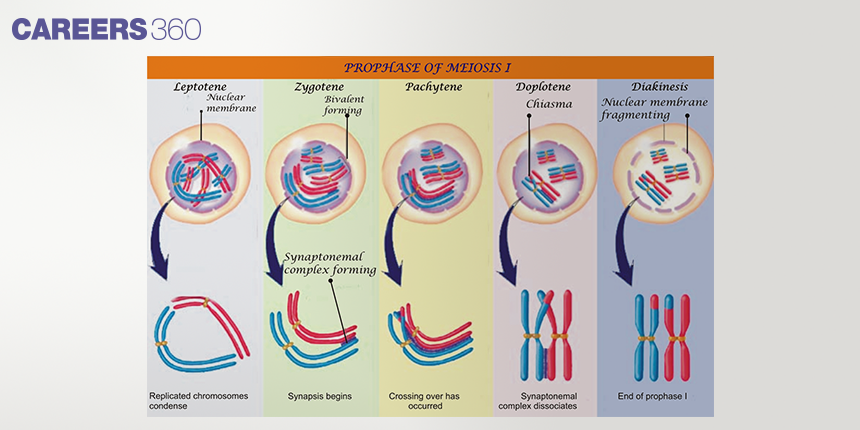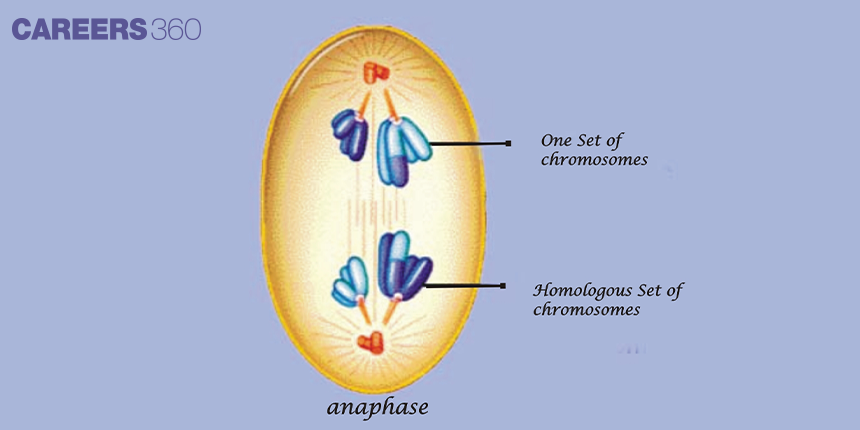Meiosis I : Reductional Cell Division: Stages, Overview & Importance
Meiosis specialises in contributing to sexual reproduction in eukaryotic organisms: plants, animals, and fungi. Unlike mitosis, it brings about a reduction in the number of chromosomes by half to create gametes-sperm and eggs-genetically unique cells. Meiosis I is a topic of the chapter Cell Cycle and Cell Division in Biology.
This Story also Contains
- Meiosis I
- Meiosis I Stages
- Significance of Meiosis I
- Recommended Video for Meiosis I

Meiosis I
Meiosis I is a reductional cell division that halves the number of chromosomes. It changes a diploid to a haploid state so that gametes can then combine during reproduction without excessive chromosome numbers. The reduction is accomplished in two successive cell divisions: meiosis I and meiosis II.
Whereas mitosis produces two identical daughter cells, meiosis I produce two cells that differ from each other. The parent cell after prophase I, in which homologous chromosomes pair up, and anaphase I, during which the paired chromosomes separate. This way, by allowing for more genetic diversity through crossing over, all the resulting gametes will have a unique combination of genetic material, being thus a driver for evolutionary adaptation.
Also Read:
Commonly Asked Questions
Meiosis I Stages
Meiosis I is studied under Prophase I, Metaphase I, Anaphase I and Telophase I.
Prophase I
It is the longest phase of meiosis I.
It is divided into five substages: leptotene, zygotene, pachytene, diplotene and diakinesis.
Leptotene
The chromatin begins to condense to form chromosomes.
Chromosomes appear as thin and long threads.
By the end of this phase, chromosomes become visible under a microscope.
Zygotene
The pairing of the homologous chromosomes initiates in this phase.
The pairing of homologous chromosomes is called synapsis.
The synapsed homologous chromosomes appear in the form of bivalent chromosomes or tetrad of chromatids.
In the tetrad, two similar chromatids of the same chromosome are called sister chromatids and those of two homologous chromosomes are termed non-sister chromatids.
A filamentous ladder-like nucleoproteins complex, called a synaptonemal complex appears between the homologous chromosomes. It holds the homologous chromosomes together.
Pachytene
The exchange of parts between non-sister chromatids occurs during this phase.
It is called the crossing over.
Crossing over occurs through breakage and reunion of chromatid segments.
Breakage is called nicking. It is assisted by an enzyme endonuclease.
Reunion is termed annealing. It is aided by an enzyme ligase.
Diplotene
This phase involves pulling away the synapsed homologous chromosomes.
The point of attachment of the homologous chromosomes where crossing over occurs is called chiasma.
Homologous chromosomes remain attached only at chiasma.
There can be more than one chiasmata.
Diakinesis
It marks the terminalization of chiasma.
The nuclear membrane and nucleolus degenerate.
Chromosome recondenses and tetrad moves to the metaphase plate.
Spindle fibres begin to form.
When the diakinesis of prophase-I is completed than cell enters into metaphase-I.

Metaphase I
During this phase, bivalents arrange themselves on the metaphase plate.
Hence, a fully formed spindle and equatorial alignment of the chromosomes are seen during this phase.
The alignment of homologous chromosomes is independent of each other.
This is responsible for generating genetic variability.
Anaphase I
The homologous chromosomes of each bivalent separate from each other.
The separated homologous chromosomes move to opposite poles
Therefore, in this phase, the chromosomes separate and not the chromatids.
So, each chromosome will still have two sister chromatids.
Hence, anaphase I involve a reduction in the number of chromosomes.

Telophase I
Two daughter nuclei are formed but the chromosome number is half the chromosome number of the mother cell.
This phase is not necessarily complete wholly.
The spindle disappears, but new nuclear envelopes need not form before the onset of meiosis II.
Cytokinesis I
It may or may not follow the telophase I.
When it occurs, it forms the dyad of cells.
Interkinesis
Following cytokinesis I, the cells enter interkinesis.
It is also known as intermeiotic interphase.
During this phase, there is no duplication or replication of DNA as the chromosomes are already duplicated.
Commonly Asked Questions
Significance of Meiosis I
Meiosis I is essential in providing ways in which genetic diversity can take place. Through crossing over processes during prophase I and independent assortment that takes place in metaphase I leads to specific sets of genetic materials that form the gametes. Such genetic diversity is quite important for the survival as well as adaptation of species.
Since it allows for greater variability in the offspring; this way, they could become better adapted to changing environmental conditions. Meiosis I also provides for the decreased number of chromosomes from diploid to haploid so that when such gametes fuse during fertilisation. The correct number of chromosomes characteristic of the species is present in the zygote. Thus, meiosis I is recognised as a process of great importance in maintaining genetic integrity and therefore in promoting evolutionary success among sexually reproducing organisms.
Also Read:
| Cell Cycle | Meiosis II |
| Difference Between Mitosis and Meiosis | Difference Between Karyokinesis and Cytokinesis |
| Eukaryotic Cells | Prokaryotic Cells |
Commonly Asked Questions
Recommended Video for Meiosis I
Frequently Asked Questions (FAQs)

